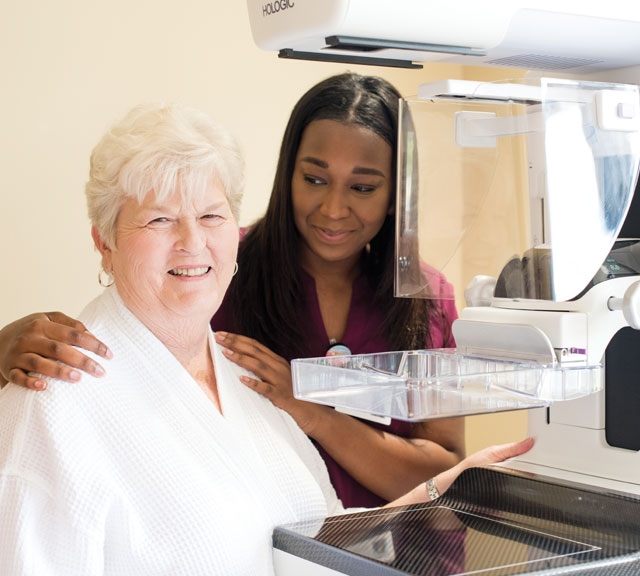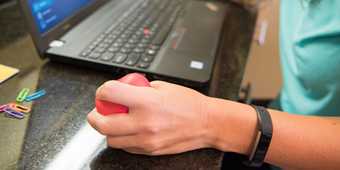Should I Worry About Breast Calcifications?

Calcification may signal cancer.
Find out if your breast calcification is reason for concern.
Of course, any time you hear that something is different on your mammogram results, you become concerned. But if you’re told that breast calcifications were detected, there’s important information for you to know, starting with the fact that breast calcifications are exceedingly common.
“We see breast calcifications all the time. Most of the time they are harmless and aren’t cause for concern,” says Thomas Heck, MD, surgical director, the breast center at Miami Valley Hospital North.
Feeling more relaxed? Good! Let’s learn more.
What are Breast Calcifications?
As women age, they sometimes get tiny spots of calcium (a mineral) in their breast. These “calcifications” are too small to feel, so they only can be detected on a mammogram. Calcifications show up as tiny bright white spots.
Do I Have Too Much Calcium in My Diet?
No. Diet has nothing to do with getting breast calcifications. Calcifications may be related to older age, past injury or inflammation, or swelling of the breast tissue (such as from an infection).
How Common are They?
Calcifications are found on about half of all mammograms in women ages 50 and older. For women under 50, one in 10 mammos will show calcifications.
Should I be Concerned?
There are two main types of calcifications:
- Macro: Macrocalcifications appear large and round on a mammogram. Usually they’re not related to cancer at all.
- Micro: Microcalcifications are small and may appear in clusters. They are usually benign, but could be a sign of breast cancer.
“We see breast calcifications all the time. Most of the time they are harmless and aren’t cause for concern.”
What Next?

If you have macrocalcifications, usually no follow-up is needed.
If you have microcalcifications, your health care provider may recommend a follow-up biopsy to rule out cancer. “We look at your prior mammograms to spot any changes,” says Dr. Heck. “Many women have microcalcifications from year to year and they never change. We don’t biopsy those.”
In most cases, microcalcifications don’t need further investigation. But a biopsy may be required if:
- Microcalcifications are appearing for the first time
- A new group has formed
- There are a significant number
- There’s a change from the last mammogram
About 80 percent of microcalcifications are benign. However, they’re sometimes an indication of precancerous changes or cancer in the breast. If the biopsy shows the calcifications are benign, most commonly nothing needs to be done except continuing yearly mammograms.
Calcification may signal cancer.
Find out if your breast calcification is reason for concern.
Source: Susan G. Komen; American Cancer Society, Harvard Health; Thomas Heck, MD, Gem City Surgical Associates





